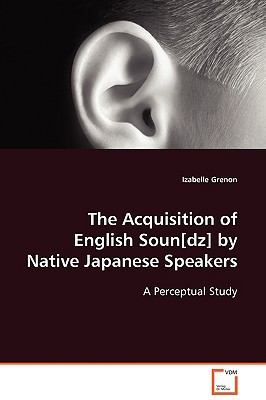![The Acquisition of English Soun[dz] by Native Japanese Speakers](https://thumb-eu.knygos-static.lt/SB9aSbEHz7xO96YT8vRgmKc-JsM=/fit-in/0x60/images/books/13174651/9783639097658.jpg)
- We will send in 10–14 business days.
- Author: Izabelle Grenon
- Publisher: VDM Verlag
- ISBN-10: 3639097653
- ISBN-13: 9783639097658
- Format: 15.2 x 22.9 x 0.6 cm, softcover
- Language: English
- SAVE -10% with code: EXTRA
The Acquisition of English Soun[dz] by Native Japanese Speakers (e-book) (used book) | bookbook.eu
Reviews
Description
Individuals learning a second language may experience difficulties in perceiving sounds that are unfamiliar to them. Crucially, some sounds may be problematic even if they are used in the native language of the learners. For example, Japanese learners of English generally experience difficulties in distinguishing a word like 'rose' from 'roads', even though both sounds - [d] and [z] - occur in Japanese. Thus, a simple comparison of segment inventories between one's first and target language is insufficient to predict the impediments encountered by adult second language learners. The present study investigates whether a phono-logical approach that compares inventories of features rather than segments can provide a better account of these difficulties. The results of an experiment evaluating the perception of 16 English sound con-trasts by native Japanese speakers suggest that in addition to featural differences, the role of phonotactics and acoustic correlates cannot be ignored. Results of this research have important implications for theories of language perception and acquisition, and should be useful to anyone interested in language processing or language teaching.
EXTRA 10 % discount with code: EXTRA
The promotion ends in 20d.05:53:28
The discount code is valid when purchasing from 10 €. Discounts do not stack.
- Author: Izabelle Grenon
- Publisher: VDM Verlag
- ISBN-10: 3639097653
- ISBN-13: 9783639097658
- Format: 15.2 x 22.9 x 0.6 cm, softcover
- Language: English English
Individuals learning a second language may experience difficulties in perceiving sounds that are unfamiliar to them. Crucially, some sounds may be problematic even if they are used in the native language of the learners. For example, Japanese learners of English generally experience difficulties in distinguishing a word like 'rose' from 'roads', even though both sounds - [d] and [z] - occur in Japanese. Thus, a simple comparison of segment inventories between one's first and target language is insufficient to predict the impediments encountered by adult second language learners. The present study investigates whether a phono-logical approach that compares inventories of features rather than segments can provide a better account of these difficulties. The results of an experiment evaluating the perception of 16 English sound con-trasts by native Japanese speakers suggest that in addition to featural differences, the role of phonotactics and acoustic correlates cannot be ignored. Results of this research have important implications for theories of language perception and acquisition, and should be useful to anyone interested in language processing or language teaching.


Reviews